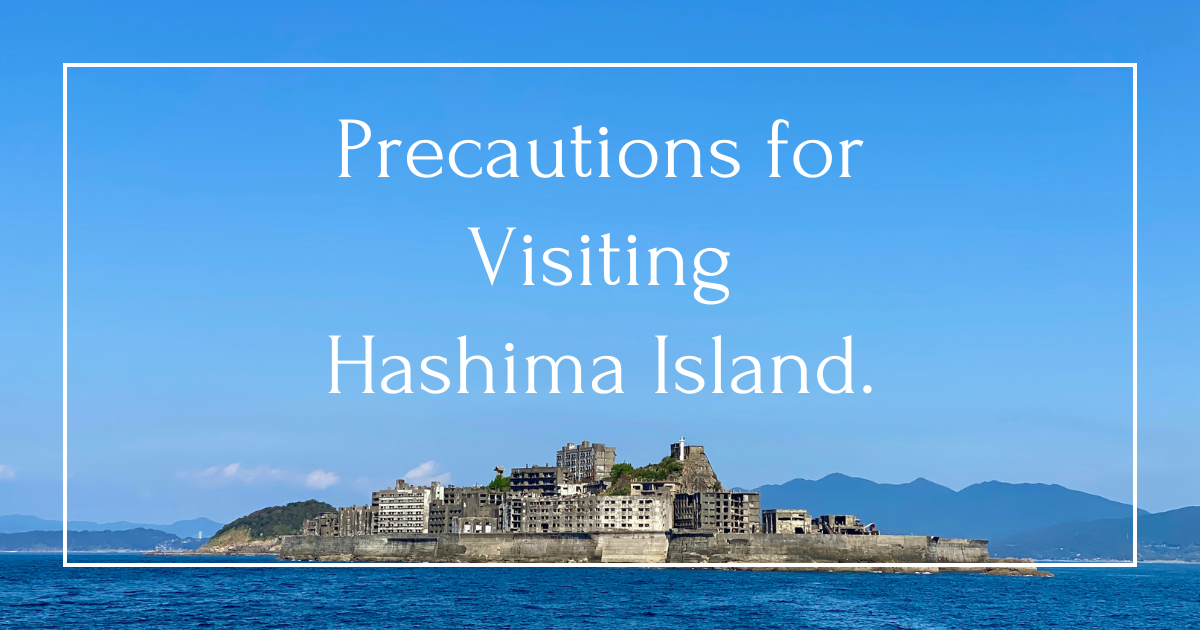5 Important Tips for Visiting Hashima Island

Gunkanjima, officially known as “Hashima Island,” is an uninhabited island in Nagasaki Prefecture. Once a thriving coal mining hub, it now stands as a UNESCO World Heritage Site, attracting many tourists. However, visiting Hashima Island comes with several caveats.
Due to weather and safety regulations, tours may not always proceed as planned. The island features numerous historic structures with strict preservation rules. Understanding these considerations and preparing appropriately will help you enjoy a memorable visit.
This article offers five essential tips for those planning a trip to Hashima Island, covering landing restrictions, necessary items, clothing, and more. By knowing these points in advance, you can ensure a smooth and enjoyable tour. Reflect on Hashima Island’s history while enjoying a safe and fulfilling visit.
1. Weather-Dependent Landing - Is it true you often can’t land?
Landing on Hashima Island requires meeting specific weather and safety conditions as per Nagasaki City regulations (Hashima Dolphin Pier Use Operation Standards).
Conditions include:
- Wind speed over 5m/s
- Wave height over 0.5m
- Visibility under 500m
- When the captain deems it unsafe for passengers to disembark
Statistics indicate that weather conditions are suitable for landing about 100 days a year, giving you roughly a 30% chance of landing on any given day.
Even if the tour departs, you may not be able to land based on local weather. Here’s what happens if you can’t land:
- The tour will circle Hashima Island before returning to port
- Hashima Island viewing facility fees (around 310 yen) will be refunded
- Boarding fees are non-refundable
Except in clearly bad weather, Hashima Island landing tours operate under the premise that landing isn’t guaranteed until you arrive. This makes successful landings particularly rewarding, but it’s essential to understand that reaching the island doesn’t always mean landing.


2. Wear Comfortable Clothing - Avoid Inappropriate Shoes
For safety reasons, the following footwear is prohibited on Hashima Island:
- High heels
- Stiletto heels
- Beach sandals
- Traditional Japanese sandals (zori)
High and stiletto heels can get stuck in the grating on the pier. Sandals and zori are prohibited due to the high risk of slipping and potential injury from sharp shells or rocks.
Choose shoes that are easy to walk in and provide good heel protection. Sneakers or trekking shoes are recommended. Check the tour company’s prohibited items list regarding footwear before your trip.

3. Little Shade on Hashima Island - Essential Summer Heat Measures
Regardless of the season, sunny days on Hashima Island can be extremely hot. The island offers little shade, as seen in the photo below.

- Sunscreen
- Hat
- Hydration
- Items to cool your body
Make sure to bring these. There are no shops on Hashima Island, so prepare everything before boarding.
4. No Umbrellas in Strong Winds - Bring a Raincoat

Surrounded by the sea, Hashima Island often experiences strong winds, making umbrellas impractical.
In case of rain, some tour companies sell raincoats for around 200 yen. However, if the weather seems uncertain, it’s best to bring your own.
5. Required Documents for Smooth Check-In - Submission of Waivers
When joining a Hashima Island landing tour, you must submit the following documents at check-in, which are mandatory for all tour companies.
- Waiver
- A document agreeing to abide by regulations and acknowledging the possibility of not landing due to weather
- Parental Responsibility Declaration
- Required only if traveling with children, affirming the guardian’s responsibility for the child’s actions
These documents can be filled out at the reception, but it’s smoother to prepare them in advance. Download the forms from the tour company’s official website, print, and fill them out beforehand.
Tour Company Document Download Pages
- Items to Bring - Gunkanjima Concierge
- Gunkanjima Landing Tour: General Submission Forms - Yamasa Kaiun
- Download Various Documents - Seaman Shokai
- Download Various Forms - Gunkanjima Landing Cruise
A Journey to Reflect on Hashima Island’s History
Hashima Island, with its unique scenery and historical background, attracts numerous tourists. The remnants of the once-thriving coal mining community tell stories of the harsh lives of its workers, offering visitors a profound experience.
However, to fully enjoy Hashima Island, you need to understand several key points. Landing is weather-dependent, and careful consideration of your clothing and belongings is necessary.

Confirm landing conditions and necessary preparations in advance, and plan a flexible itinerary that can adapt to weather changes. Opt for comfortable clothing and shoes due to the island’s uneven terrain.

Reflect on Hashima Island’s history and enjoy a safe, memorable tour. Amidst the island’s tranquility, you can sense the lives of those who once worked here.
Hashima Island tourism offers a special experience steeped in history and romance. Follow the guidelines and fully immerse yourself in the island’s allure.

